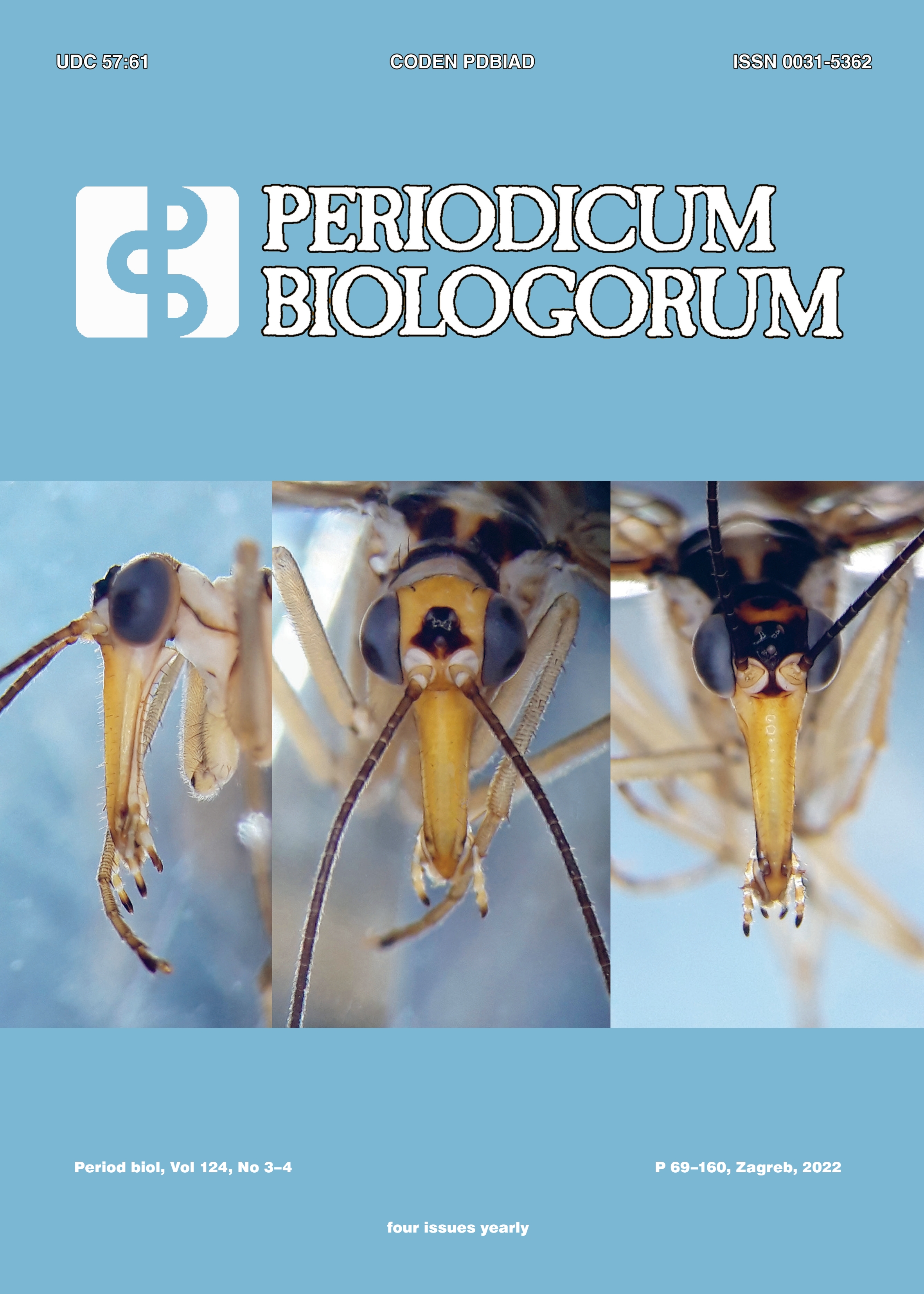Genetic analysis of transductional recombination in Escherichia coli reveals differences in the postsynaptic stages of RecBCD and RecFOR pathways
Postsynaptic stages of transductional recombination in E. coli
DOI:
https://doi.org/10.18054/pb.v124i3-4.23604Abstract
Background and purpose: Homologous recombination in Escherichia coli proceeds via two pathways, RecBCD and RecFOR, which use different enzymes for DNA end resection and loading of RecA recombinase. The postsynaptic reactions following RecA-mediated homologous pairing have mostly been studied within the RecBCD pathway. They involve RuvABC helicase/resolvase complex, RecG and RadA helicases that process recombination intermediates to produce recombinant DNA molecules. Also, RecG functionally interacts with the PriA protein in initiation of recombination-dependent replication. Here, we studied the individual and combined effects of ruvABC, recG and radA null mutations on transductional recombination in both pathways. The effect of the priA300 mutation, which acts as a suppressor of the recG mutation, was also tested. The goal was to characterize the postsynaptic stage of transductional recombination in more details, especially in the RecFOR pathway, which is less well-studied.
Materials and methods: Phage P1vir-mediated transduction was used to measure recombination efficiency in a series of recombination mutants. The proA+ marker was used for selection in transductional crosses with various ΔproA recipients.
Results: The ruvABC mutation moderately decreased recombination in both recombination pathways, while radA had no effect. The recG mutation reduced recombination in the RecBCD pathway but not in the RecFOR pathway. The strong recombination defect of recG radA double mutants in both pathways was completely suppressed by the priA300 mutation, and this suppression depended on the functional RuvABC complex.
Conclusions: RecG and RadA proteins have a redundant role in transductional recombination via RecFOR pathway. In both recombination pathways, RecG and RadA functionally interact with PriA, probably during initiation of recombination-dependent replication.
Downloads
Published
Issue
Section
License
The contents of PERIODICUM BIOLOGORUM may be reproduced without permission provided that credit is given to the journal. It is the author’s responsibility to obtain permission to reproduce illustrations, tables, etc. from other publications.


